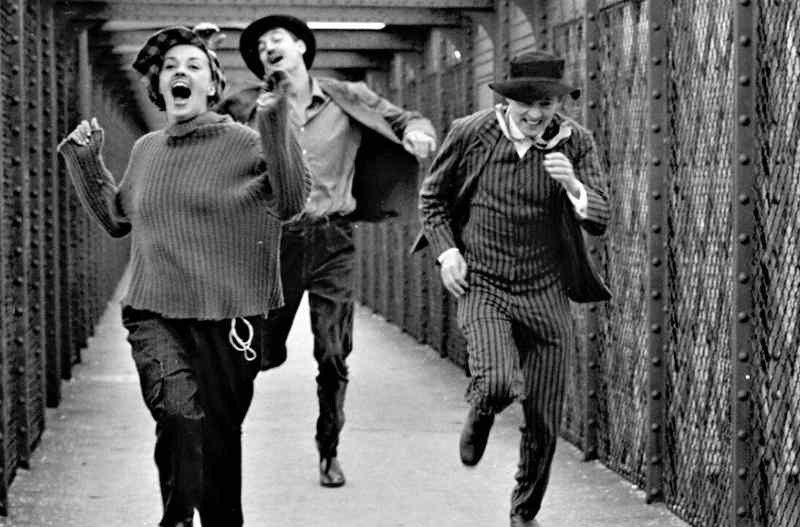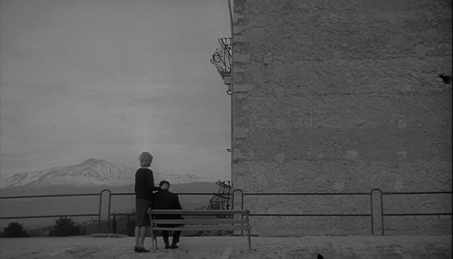Written in September 2021 for Caiman Cuadernos de Cine‘s November issue. — J.R.
For an online weekly lecture series I’m giving in
Chicago, “World Cinema of the 1960s”, I can revisit
certain experiences I had in Manhattan six decades
ago, meanwhile exploring the relevance films such as
L’avventura, L’année dernière à Marienbad, and Le
Mépris might have today, especially for young people
seeing them for the first time.
How much have we learned since my discovery that a film like L’avventura could have the weight of a serious novel? I was already an aspiring novelist then, so it took longer to appreciate Antonioni’s mastery of mise en scène, composition, editing, and sound mixing. How many cinephiles today already know about such things without L’avventura reminding them?
I hardly had any notion of intellectual cinema in 1961, or that Michelangelo Antonioni and the very different Jean-Luc Godard were fast becoming its key European figures. Books about film history in English could be counted on the fingers of one hand. Yet the fact that L’avventura, booed at Cannes, placed second, after Citizen Kane, in an international critics poll conducted by Sight and Soundless than two years later, suggested that this hIstory was already being rewritten.
I wasn’t an unqualified acolyte of either Antonioni or Godard at this point–not as awed as I was by Alain Resnais’ first two features. I was bored by Jeanne Moreau’s interminable, symbol-laden walk through Milan in La notte, inspiring one critic to remark that the Talkies had become the Walkies. My original sense of Le Mépris as a pompously misguided drama laced with softcore porn was similarly irritated. I only revised my opinion after I met Susan Sontag in the mid-60s, who told me she’d seen the film several times the week it opened. Because I’d done the same thing with Marienbad, she inspired me to take a second look.
But these were the sexist 60s in anti-intellectual America, where Sontag’s taste was considered snobbish while Pauline Kael, about to enter the mainstream, was ridiculing the “Come-Dressed-As-The-Sick-Soul-of-Europe-Parties” of Antonioni, Fellini, and Resnais (as if such radically different artists could share the same mind-sets) while many male critics who disparaged Antonioni and Godard for their heaviness also illogically attacked their muses, Monica Vitti and Anna Karina, for being lightweight.
Yet even though it was puzzling that so many early New Wave features ended with gratuitous and/or absurdist deaths, clearly the characters in those films and in Antonioni’s with the most substance and moral direction were the women. The fact that their moral directions led to the deaths of at least one male protagonist in both A bout de souffle and Jules et Jim only made things more complicated.


